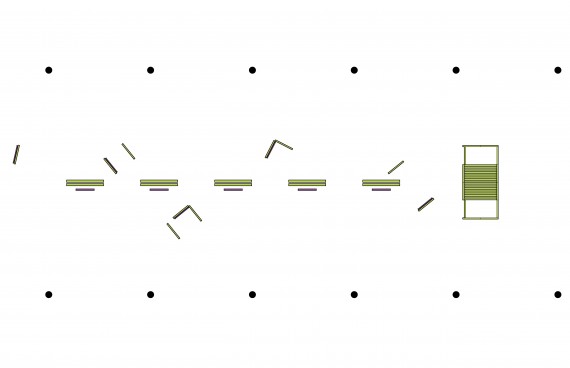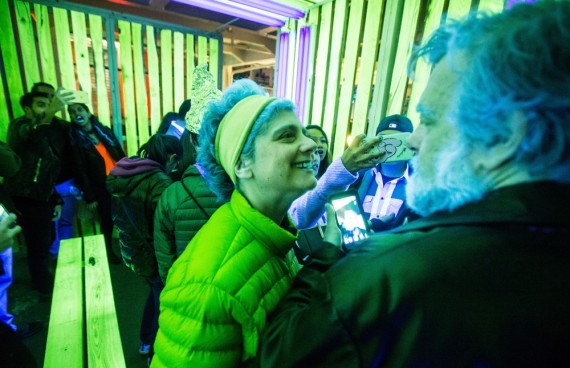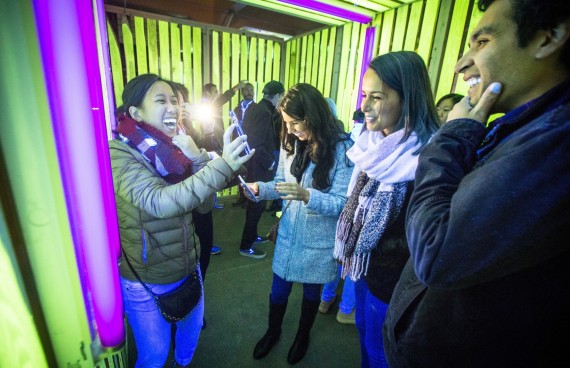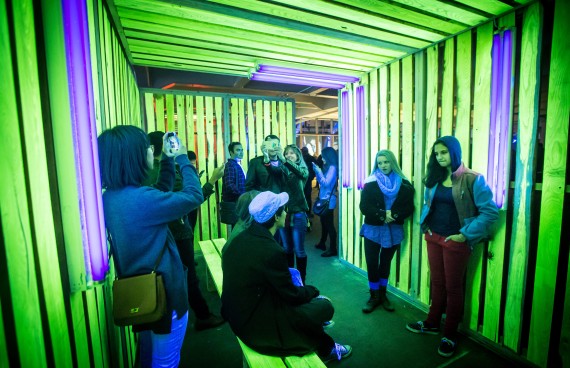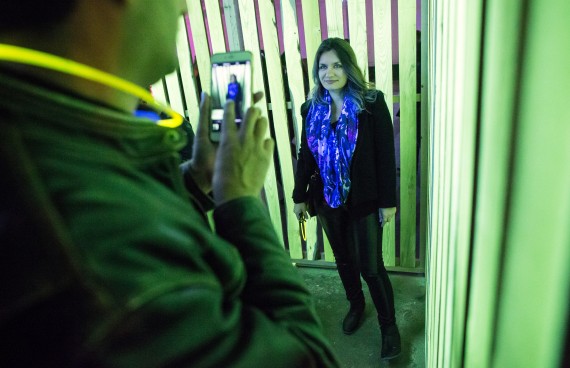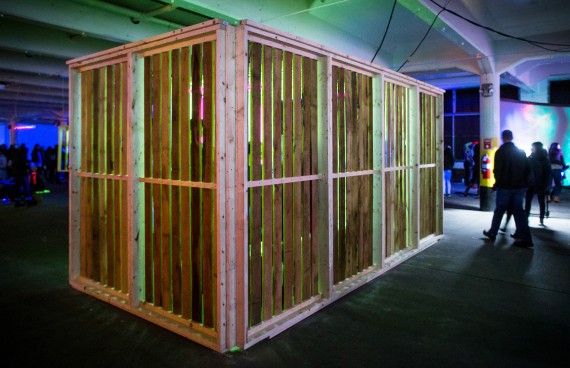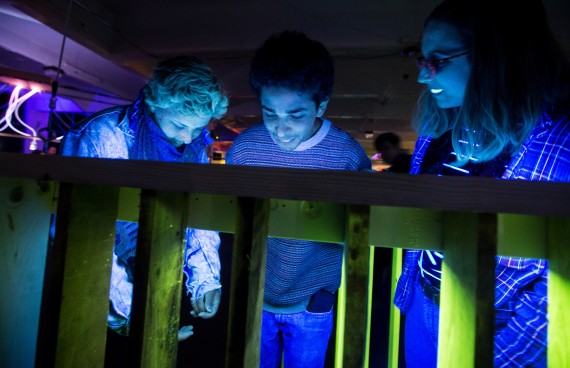Lime Light - Illuminus Boston Festival 2015
Black Locust has long been a part of northeastern US forestry, but its status as an invasive species precludes it from complete integration into the built environment. Uncommon among trees, it bears the characteristics of both fast growth and high density. Its fast growth makes it somewhat of a forest bully: it outgrows neighboring trees and then slows down to block their access to the sun. But its density and rot resistance make it ideal for landscape and exterior applications. That fact, coupled with a need to aggressively harvest it, still has not increased the presence of Black Locust in our built environment. Among its robust, often contradictory, properties, one rests quietly in plain site: a fluorescent brilliance under UV exposure. The cellular and chemical structures responsible for this phenomenon are unknown, and there is no clear evolutionary advantage attributed to it.
Lime Light is an objet d’art and architectural experience. It is a space for pondering, where the Black Locust is providing answers to questions that have not yet been asked. Lime Light is both an architectural experience and an educational tool. It is an immersive, nocturnal analogy to the New England Autumn tradition of observing leaves changing colors. It isolates a little-known property of a local tree species, with the intent of heightening awareness of the latent and manifest properties of wood. It encourages respect for the species by revealing that dominion over nature is incomplete.
Lime Light by David Kennedy, Benjamin Peek and Jacob Mans invites one to wander through a florescent green and purple glowing structure of suspended wooden panels, a hybrid between forest and scaffolding. Upon closer inspection the visitor is struck by a wondrous illumination: where planed smooth the wood itself glows green, as though reflecting the color of the Green Monster across the street. The wood boards are cut from the black locust tree which is classified as an invasive species. Its poisonous dark side shines through its intrinsic biochemical properties, glowing under exposure to black light.

